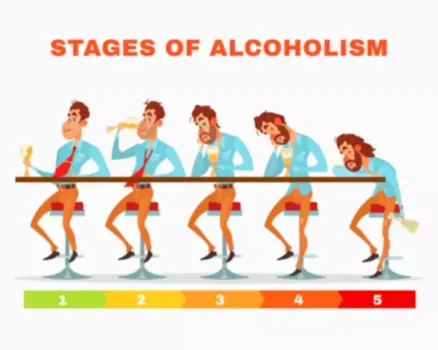
The emotional scars borne by survivors and loved ones are a constant reminder of the price paid for someone else’s negligence. When a life is lost due to drunk driving, it is not just a momentary tragedy but a persistent ache that echoes through time. Families are left to navigate a landscape of grief, facing a void that can never be filled. However, these legal measures are not merely punitive; they serve a dual purpose of accountability and deterrence. The hope is that the prospect of facing such consequences will encourage individuals to make responsible choices, safeguarding their lives and the lives of others on the road.
Enhanced Penalties for Repeat Offenders: A Steep Price to Pay
- Male drivers, particularly those ages 22 to 45; people with drinking problems and prior drinking and driving convictions; and drivers who do not wear safety belts are disproportionately likely to be involved in alcohol-related fatal crashes.
- Substantial issues with visual and auditory processing set in at a BAC of .15%, or around seven alcoholic drinks.
- The 45-to-49 age group had the highest percent, 37%, of drunk motorcycle riders killed in 2022.
- It becomes harder for your eyes to rapidly track moving objects, like cars or pedestrians.
Even a small amount of alcohol can impact one’s concentration and judgment. While driving, there are numerous demands on a person’s attention, such as staying in the correct lane, monitoring other vehicles, managing speed, and following traffic signals. The consumption of alcohol significantly elevates the chance of a crash due to the reduced ability to pay attention to the road. Proportional reductions in alcohol-related traffic deaths were smaller among people with prior drinking and driving offenses than among those without previously recorded offenses.
Strategies for Responsible Drinking
- A Driving under the influence (DUI) offense may cause you to lose your license, pay a hefty fine, or end up in jail.
- Despite laws making it illegal to sell alcohol to people under 21 and for drivers that age to drive after any drinking, most people in this age group who drive after drinking are unaware that it is illegal to do so.
- There was a 62-percent decline in traffic deaths among young people in which the person with the highest BAC in the crash had a BAC above 0.15 percent, and a 59-percent decline in deaths where BACs exceeded 0.08 percent.
- Moreover, states differ with regard to how much discretion a judge has over the penalties to be meted out.
- Zwerling and Jones, Wagenaar et al., Voas et al., Carpenter et al., and Liang and Huang showed that the Zero Tolerance Act reduced alcohol-related fatalities by 4% to 24%.
In 2022, 5,934 people operating a motorcycle were killed in traffic crashes. Of those motorcycle riders, 1,705 (29%) were drunk (BAC of .08 g/dL or higher). In 2022, the highest percentage of drunk drivers (with BACs of .08 g/dL or higher) were the 21-to 24-year-old age group. Men are most likely to be involved in this type of crash, with four male drunk drivers for every female drunk driver. The short and long-term effects of drunk driving can be serious and life-altering.

Driver’s License Penalties for a DUI Arrest or Conviction
Young adults have experienced a greater proportional reduction in alcohol-related traffic deaths than older adults in the last 20 years. Sixteen- to 20-year-olds have had the greatest decline in alcohol-related traffic deaths since 1982, down 56 percent, from 5,244 to 2,329 (see figure 3). There was a 62-percent decline in traffic deaths among young people in which the person consequences of driving drunk include: with the highest BAC in the crash had a BAC above 0.15 percent, and a 59-percent decline in deaths where BACs exceeded 0.08 percent. As shown in figure 1, in 1982 when NHTSA first made nationwide estimates, there were 26,172 alcohol-related traffic deaths. During the same timeframe, traffic deaths that did not involve alcohol increased 43 percent, from 17,773 to 25,396.

Treatment and Rehabilitation for Alcohol Dependency

By advocating for understanding, we contribute to the collective effort to create a culture of safety and compassion on our roads. Understanding the legal terminology surrounding drunk driving offenses can be confusing, especially when different states use varying terms to describe similar charges. https://ecosoberhouse.com/ In Texas, the terms “DUI” (Driving Under the Influence) and “DWI” (Driving While Intoxicated) are often used, but they have distinct implications. Each individual lost to drunk driving leaves an indelible mark on the lives of those who loved them — one that can never truly be erased.
Penalties Underage DUI Offenders Face
Options and Alternatives for DUI Offenders
Safety Belt Use

- A DWI is a criminal offense in the state of Texas and applies to drivers over the age of 21 who have a blood alcohol concentration (BAC) of 0.08% or greater due to drug or alcohol use.
- And drivers who refuse to submit to a chemical test often face longer license suspension (than that for a failed test) and possibly other penalties and consequences.
- You may also not realize that you are having difficulty inserting the key into the ignition.
- If you are pulled over for suspected DUI or DWI, a police officer may request that you take a field sobriety test to evaluate your motor skills and judgment.
